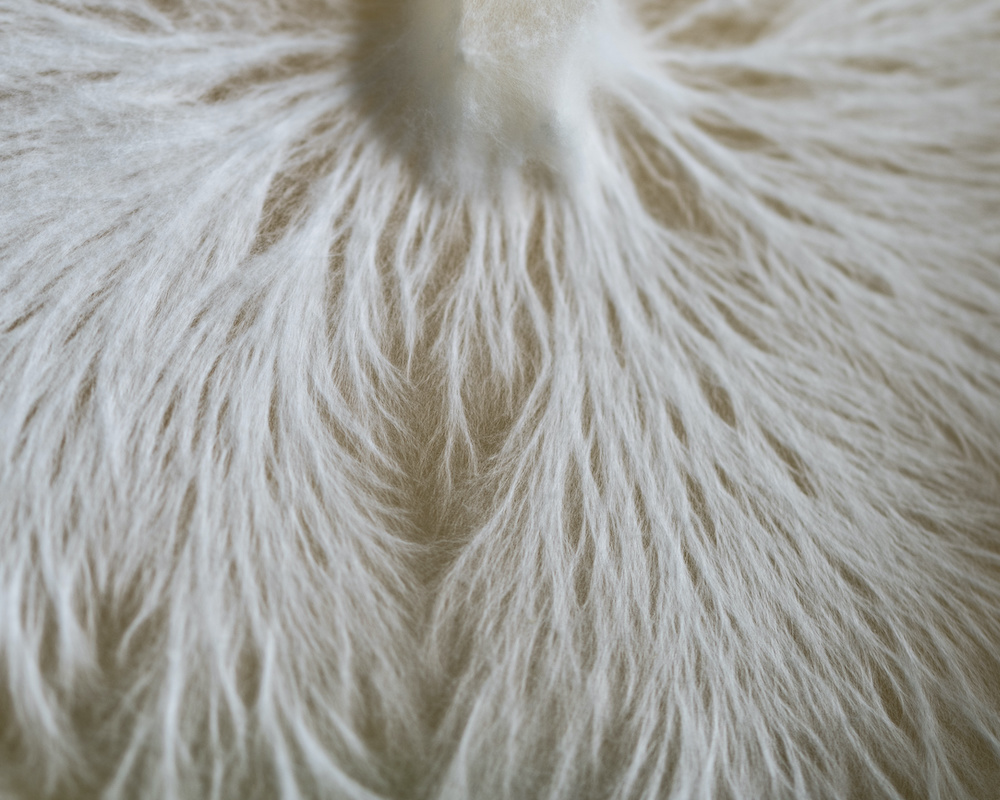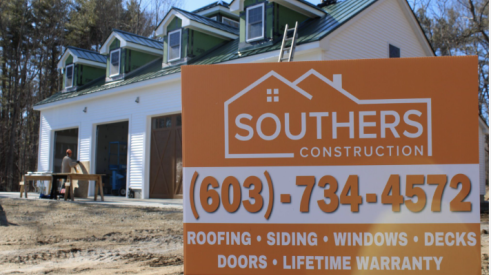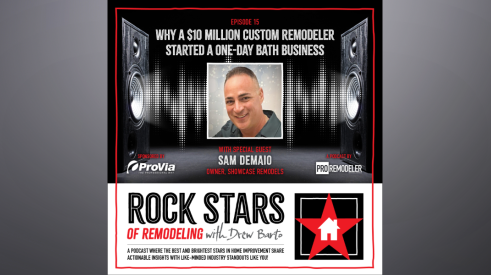The materials that compose the construction of a home are not immutable. The composition changes.
Before the 1950s, you couldn’t find a single PVC product in a home. They didn’t exist. It took a half century after separate, accidental discoveries of the material—by two differnent scientists—before PVC hit the residential market. Now you can hardly find a home without it. There was no aluminum siding before the ‘40s, no vinyl before the ‘50s, and no fibre cement (without asbestos) before the ‘80s. The three are staples today. Meanwhile, asbestos, lead, cadmium, PCBs, and many others are no longer anywhere to be found in new home construction.
Rising Prices
Innovation is an enduring hallmark in construction materials—sometimes it’s driven by epiphany, other times by economy.
Since January, the producer price index of gypsum (i.e., the price at which producers sell their product) has increased from about $210 to near $320, according to the Bureau of Labor Statistics. Over the same period, softwood lumber prices jumped from just under $225 to over $400. In October of this year, a survey from the National Association of Home Builders of its remodeling members found that two-thirds experienced at least a 10% increase in material costs—with a quarter experiencing 20% or higher. They also reported shortages in at least 22 material categories, including framing lumber, windows and doors, plywood, and OSB.
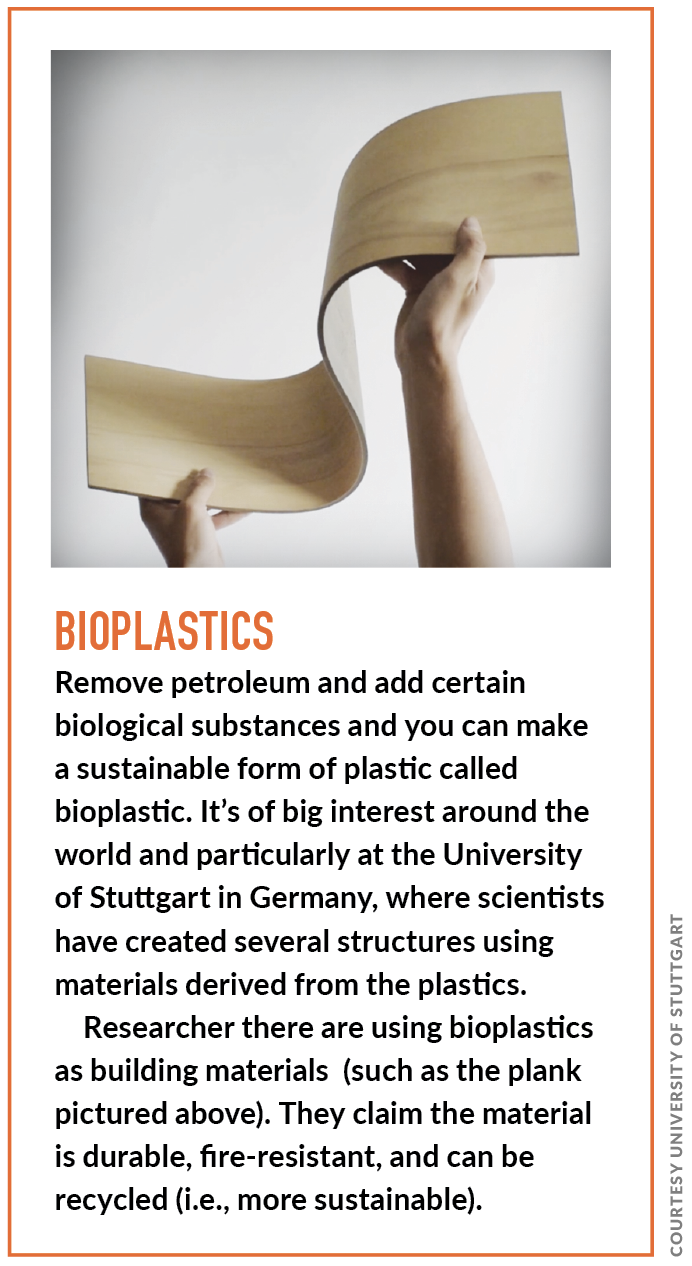 Meanwhile, remodelers are experiencing higher prices and protracted lead times “We got hit with multiple price increases, on everything,” says Abby Binder, president and CEO of Abby Windows & Exteriors in Milwaukee. “Our windows and doors suppliers are experiencing major shortages, but the biggest issue is quality control. That has been really bad.” She describes “extended lead times” and receiving “incorrect” and “damaged” products.
Meanwhile, remodelers are experiencing higher prices and protracted lead times “We got hit with multiple price increases, on everything,” says Abby Binder, president and CEO of Abby Windows & Exteriors in Milwaukee. “Our windows and doors suppliers are experiencing major shortages, but the biggest issue is quality control. That has been really bad.” She describes “extended lead times” and receiving “incorrect” and “damaged” products.
Exploring New Materials
The pains were the same though for different materials for Seattle deck builder Jason Russell, owner of Dr. Decks. “I’ve been the victim of material shortages and price increases,” says Russell, who also lost upwards of $750,000 in revenue as a result of projects cancelled from COVID. He says that his surrounding timber mills have reduced their output and local homeowners are buying more available stock as they shelter in place. “It seems to be lingering longer than it took to realize the shortage,” he says. “I’m exploring new framing materials, or ones that are soon to come to market—steel, pressure-treated LVLs, aluminum framing systems.”
Maybe framing lumber won’t ever face obsoletion—perhaps demand for vinyl windows is everlasting. But new materials will come into the home and stay.
Here are a few that may.

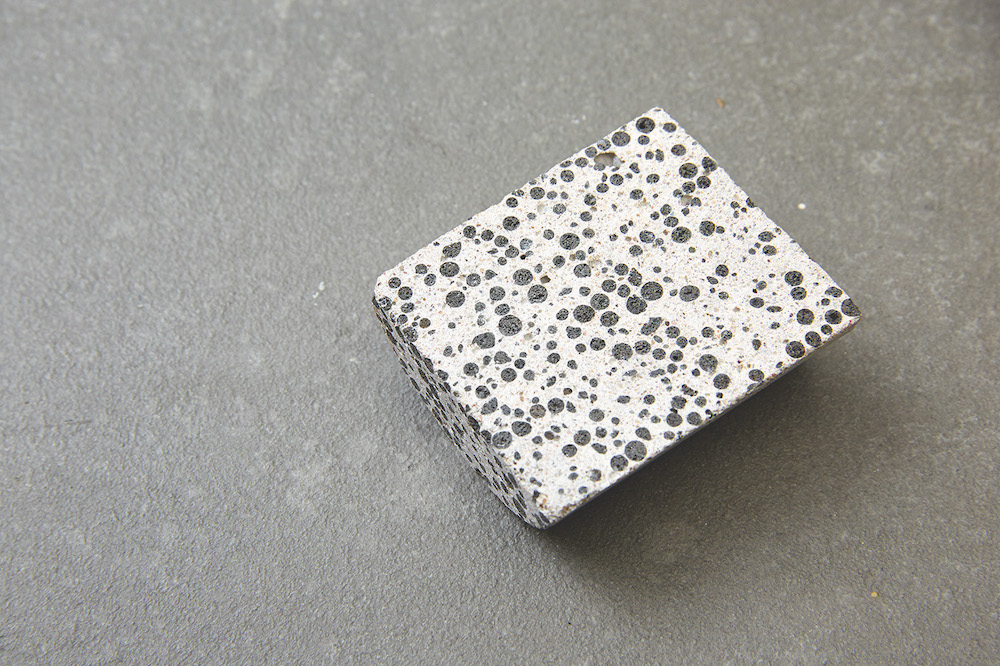
Scientist use a bacillus species of bacteria as part of the self-healing process because its spores can lay dormant for decades without air or nurtients but will still activate upon interaction with water and oxygen. | Courtesy Delt University
Prices of ready-mix concrete rose this year, same as they have every year for the last decade. It 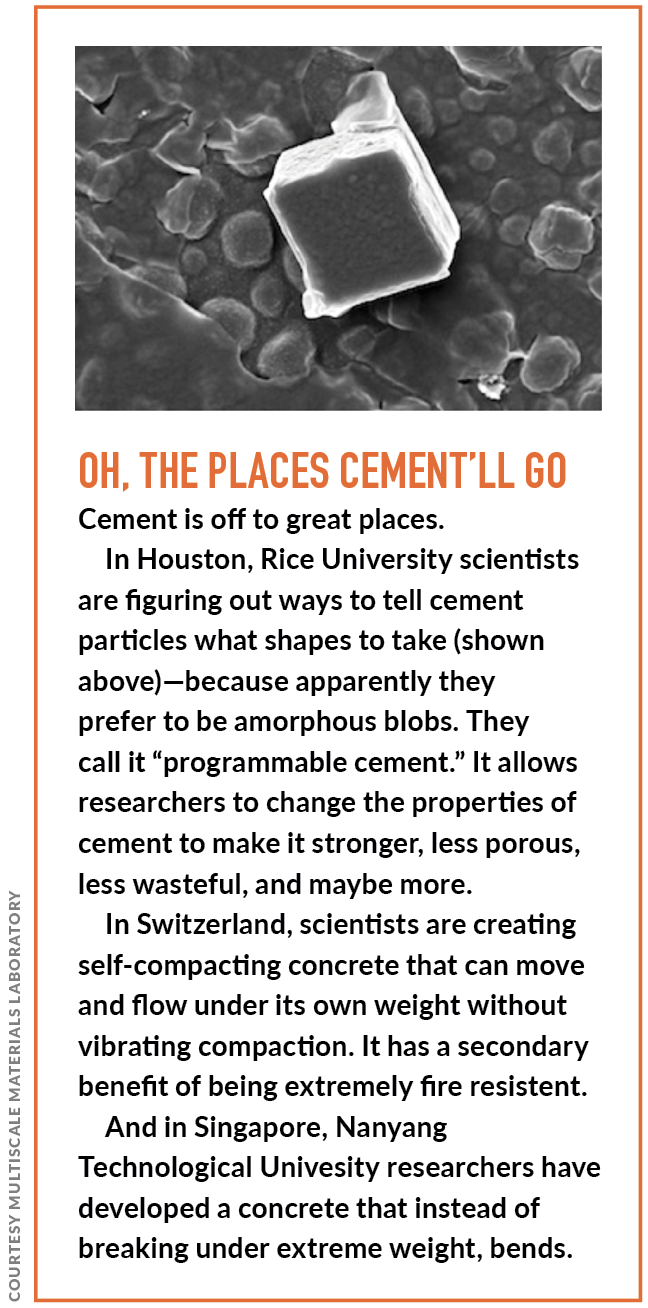 remains a relatively affordable material, but even were its price spike to rival lumber’s this year, remodelers couldn’t very well stop using concrete. In the US, it’s used twice as much as all other building material combined, according to a University of Nebraska study. There’s no realistic alternative at that scale, just improvements.
remains a relatively affordable material, but even were its price spike to rival lumber’s this year, remodelers couldn’t very well stop using concrete. In the US, it’s used twice as much as all other building material combined, according to a University of Nebraska study. There’s no realistic alternative at that scale, just improvements.
Like, what if concrete was self-healing, couldn’t stay cracked?
Structures would be stronger and more resilient. A remodeler could promise a repair-free patio and driveway, and walkway, foundation. And it’s not insignificant that cement is responsible for 8% of the world CO2 emissions, and that regenerating concrete is much more sustainable than replacing it.
Researchers at Ghent University in Belgium and at the Netherland’s Delft Unveristy of Technology, respectively, are among the scientists pushing the potential of the material. Both have effectively engineered concrete with self-healing properties through means of superabsorbent polymers called hydrogels and bacteria that work in tandem to first block encroaching moisture and further seal a crack completely. See the images of the process and product on pg 65.
An effective test of the material was reported by Ghent University scientists, in which self-healing concrete was transported to a construction site via a mixing truck and a roof slab was cast. The scientist involved considered it an “important step” towards the commercialization of the material.
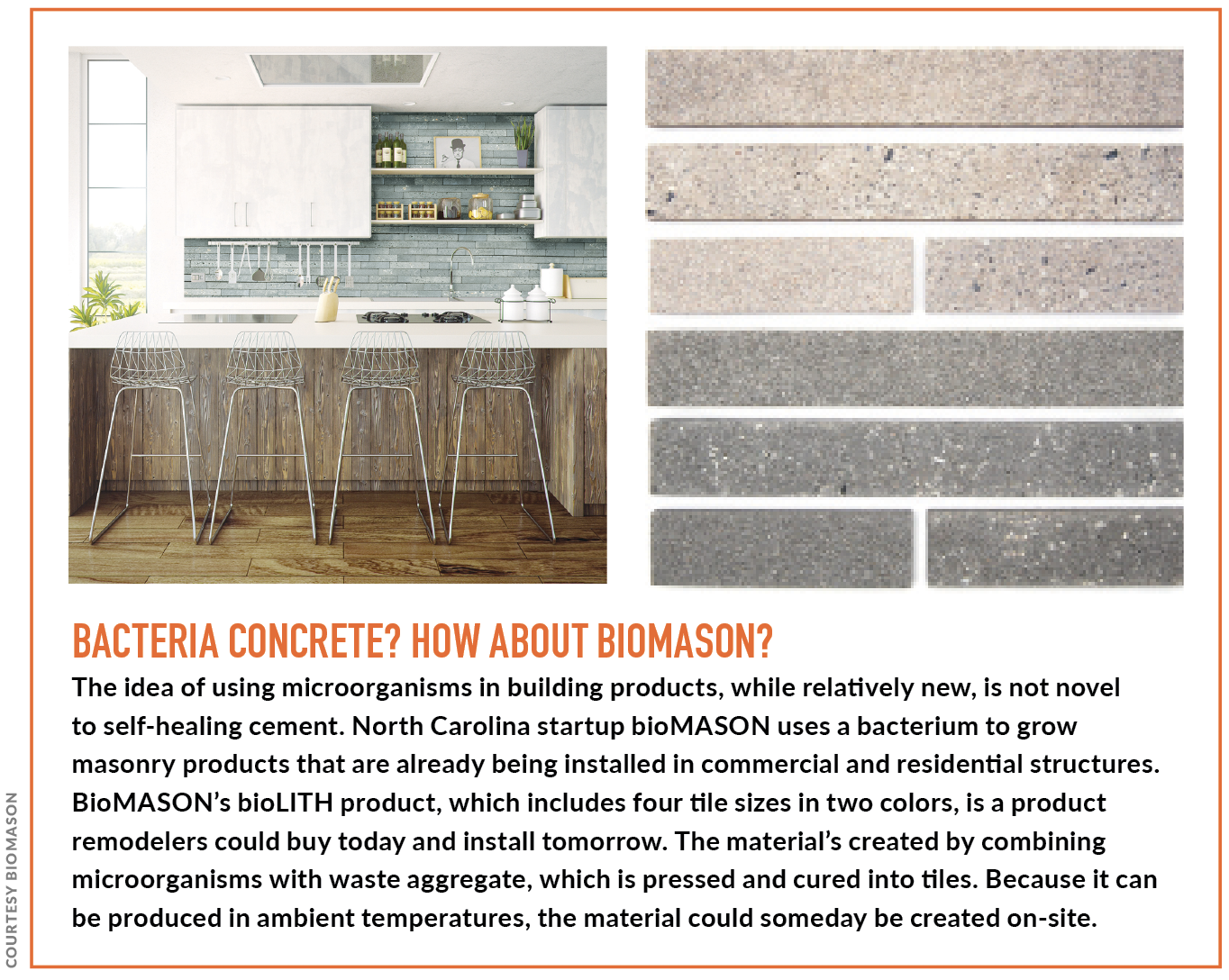

Passively cooling a structure by reflecting sunlight (i.e., radiative cooling) has been an ambition of scientists since at least the 70s. Researchers found that by including a compound called titanium dioxide (TiO2) into white paint that it would cool the air around whatever it was coating. The thought was it may be able to replace air conditioners.
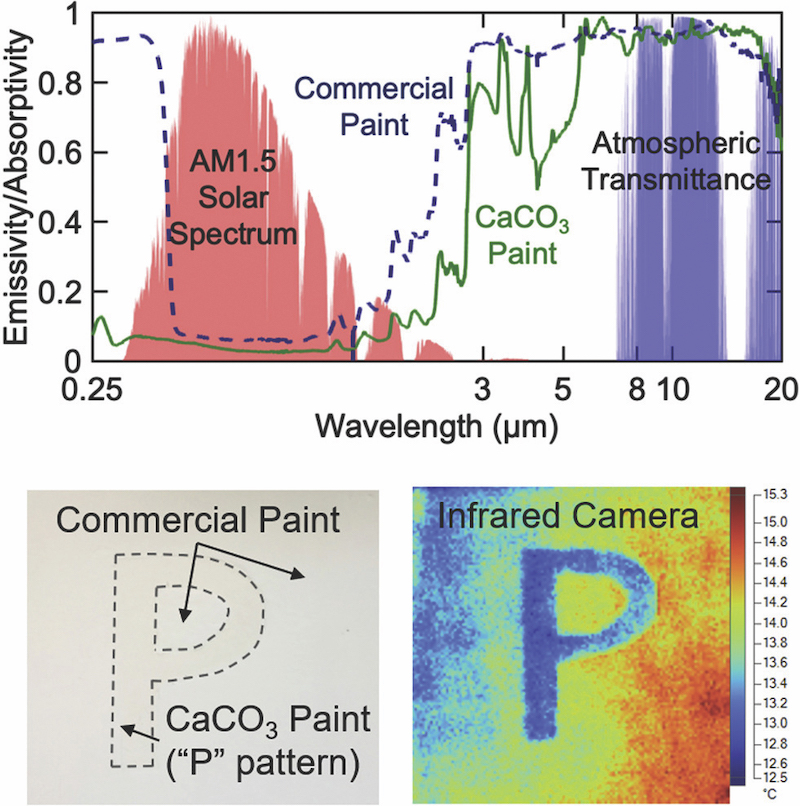 It never worked. Dozens of scientists, including from NASA, tried and none were able to achieve a cooling effect worth pursuing. Even new techniques for improving TiO2’s efficacy theorized a maximum potential solar reflectance of 92%—and it was never achieved in tests.
It never worked. Dozens of scientists, including from NASA, tried and none were able to achieve a cooling effect worth pursuing. Even new techniques for improving TiO2’s efficacy theorized a maximum potential solar reflectance of 92%—and it was never achieved in tests.
Interest in the science has fluctuated over the decades, with researchers at times believing it impossible. But at the University of Purdue, researchers have continued developing the field, and in October this year they achieved the impossible: a paint that can keep surfaces 18 degrees Fahrenheit cooler than their surroundings at night, and about 3 degrees cooler under peak, direct sunlight. In tests, the paint reflected 95.5% of sunlight.
“Your air conditioning kicks on mainly due to sunlight heating up the roof and walls and making the inside of your house feel warmer,” said co-author of the study Joseph Peoples in a statement. “This paint is basically creating free air conditioning by reflecting that sunlight and offsetting those heat gains from inside your house.”
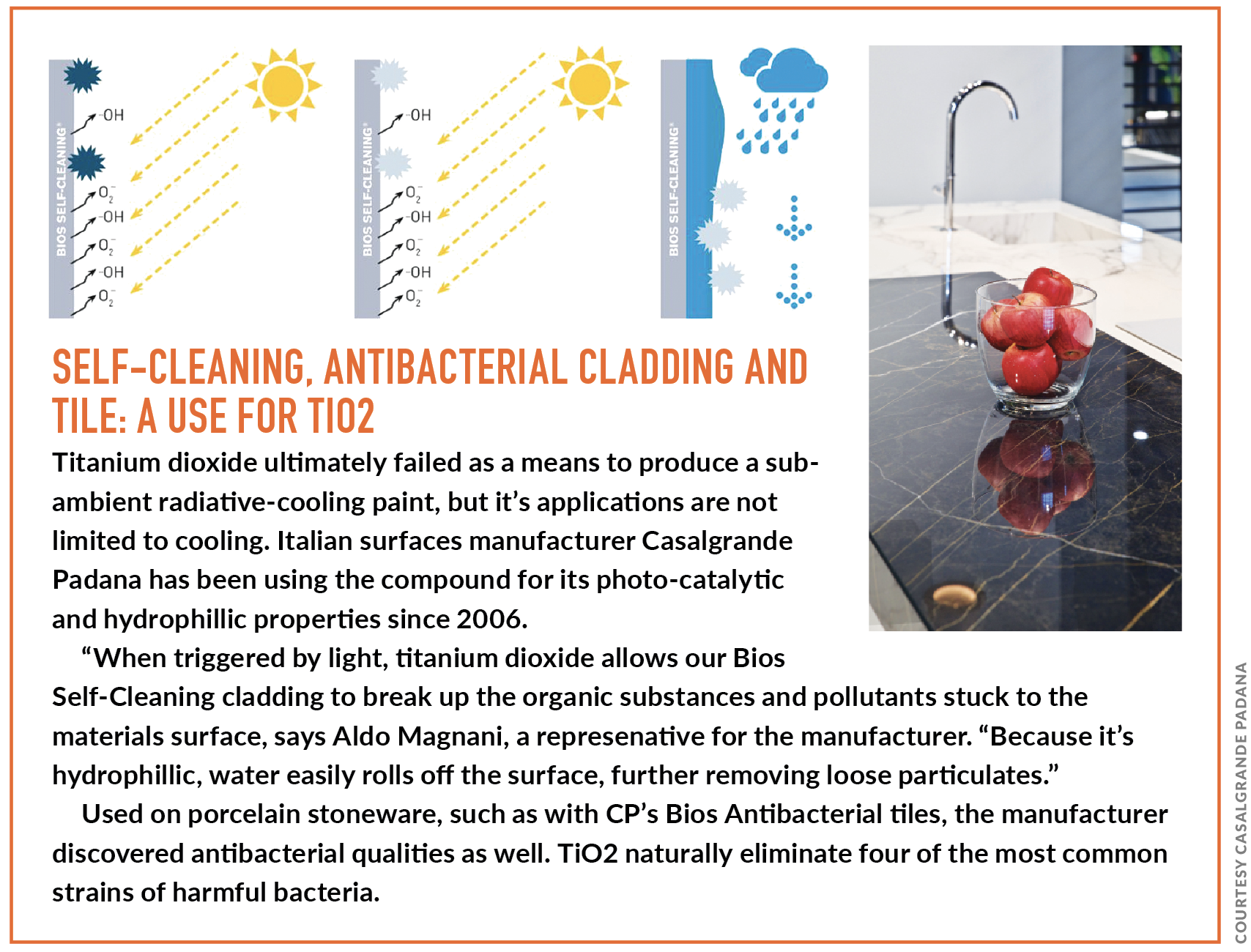

 There is a stretch of fungus in Oregon’s Blue Mountains that, even though you can only see it above ground in clusters of honey mushrooms, extends over nearly four square miles. It is the largest organism on earth and may be 8,000 years old.
There is a stretch of fungus in Oregon’s Blue Mountains that, even though you can only see it above ground in clusters of honey mushrooms, extends over nearly four square miles. It is the largest organism on earth and may be 8,000 years old.
That is mycelium. It is expansive, efficient; it can be easily, quickly, and cheaply grown in ample supply anywhere in the world; and as 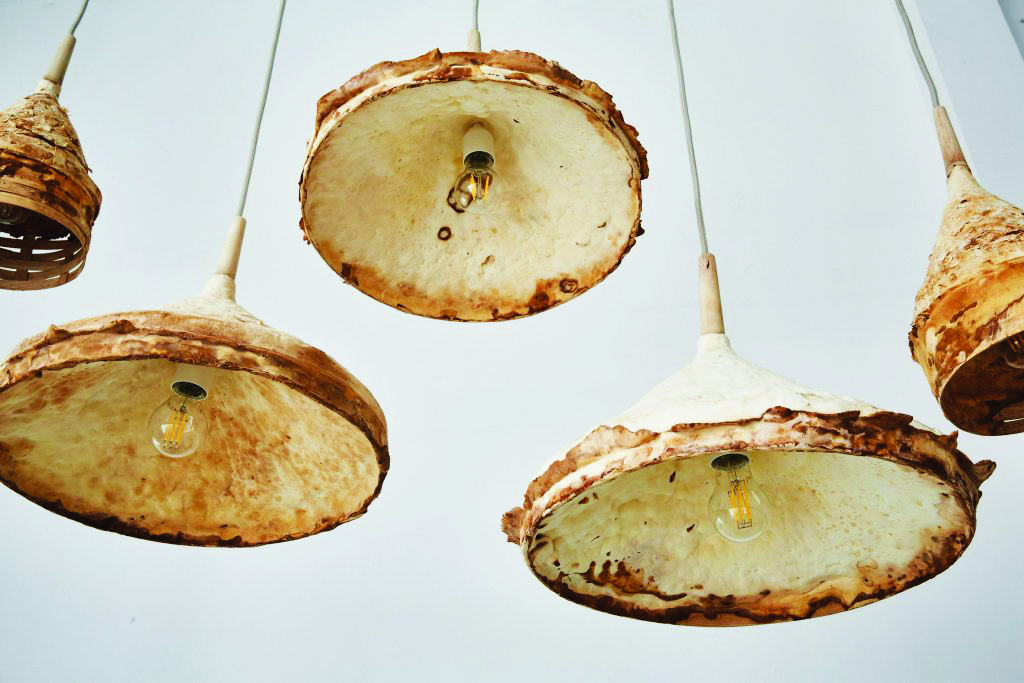 it happens, it’s a potential analog, and perhaps improvement, on a number of foam, timber, and plastic building products such as insulation, door cores, paneling, flooring, and cabinetry, according to a recent joint report on engineering mycelium composite construction materials from Australia’s RMIT University and the University of Vienna in Austria.
it happens, it’s a potential analog, and perhaps improvement, on a number of foam, timber, and plastic building products such as insulation, door cores, paneling, flooring, and cabinetry, according to a recent joint report on engineering mycelium composite construction materials from Australia’s RMIT University and the University of Vienna in Austria.
In their tests, researchers combine mycelium with various substrates, such as beech and red oak sawdust, wheat straw, hemp shavings, and cotton fibers, among others, testing the resulting materials’ tension, compression, and flexure. They compared their end products to wood, cork, polyethylene, and acrylonitrile butadiene styrene, a thermoplastic used for a range of products from pipe fittings to legos.
“Mycelium composites are particularly well suited for thermal and acoustic insulation applications, exhibiting similar or lower thermal conductivities than commercial thermal insulation materials and 70–75% acoustic absorption or better, outperforming traditional ceiling tiles, polyurethane foams and plywood,” reads the report. “They also exhibit better fire reaction and fire safety properties than traditional construction materials, such as extruded 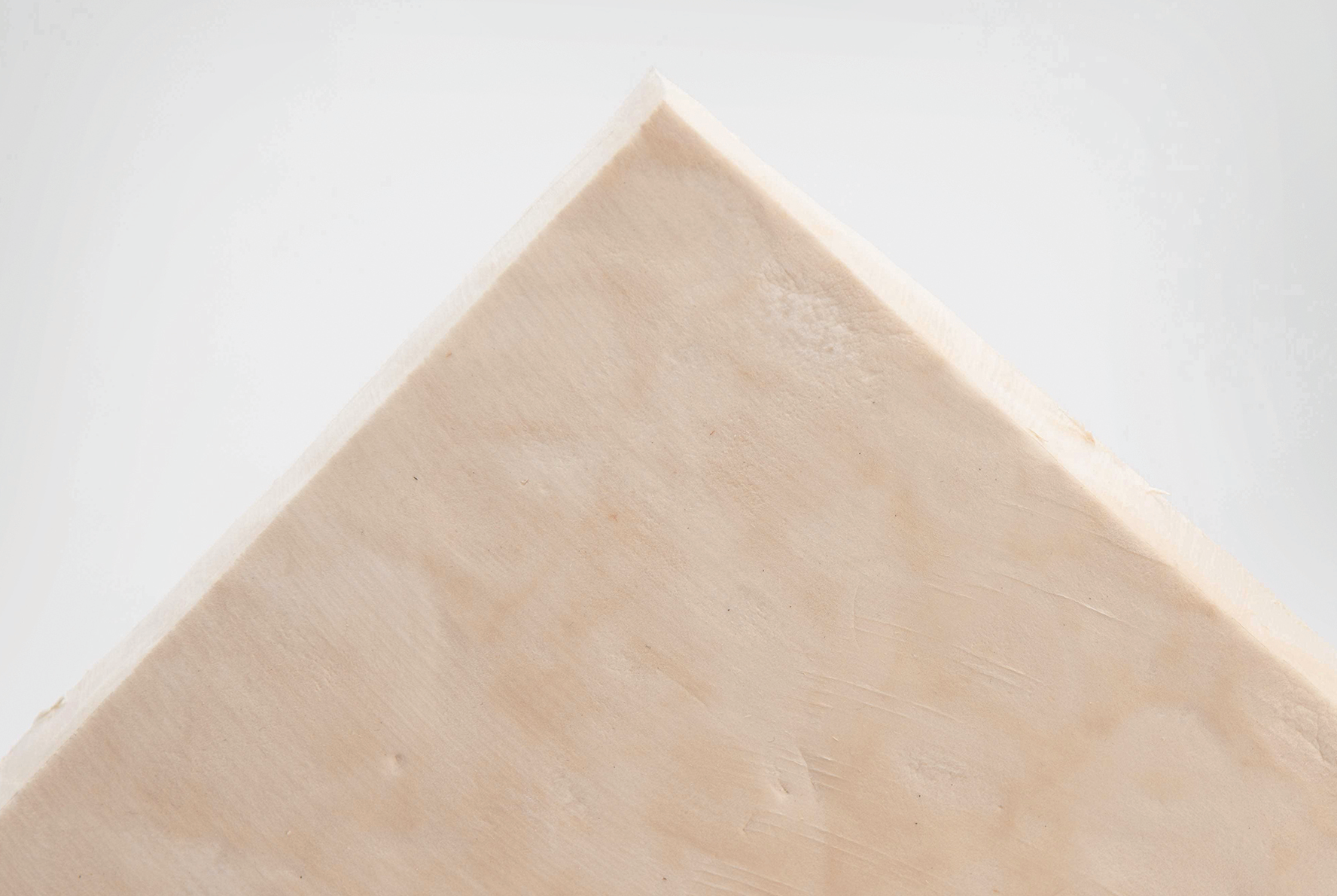 polystyrene insulation and particleboard and good termite resistance utilising natural termiticides.”
polystyrene insulation and particleboard and good termite resistance utilising natural termiticides.”
The report’s authors admit mycelium composite building materials require additional research to improve their efficacy. However, their conclusion was that mycelium’s properties makes it an “effective, cheap and environmentally sustainable technology emerging with the potential to significantly contribute to the future of green construction.”
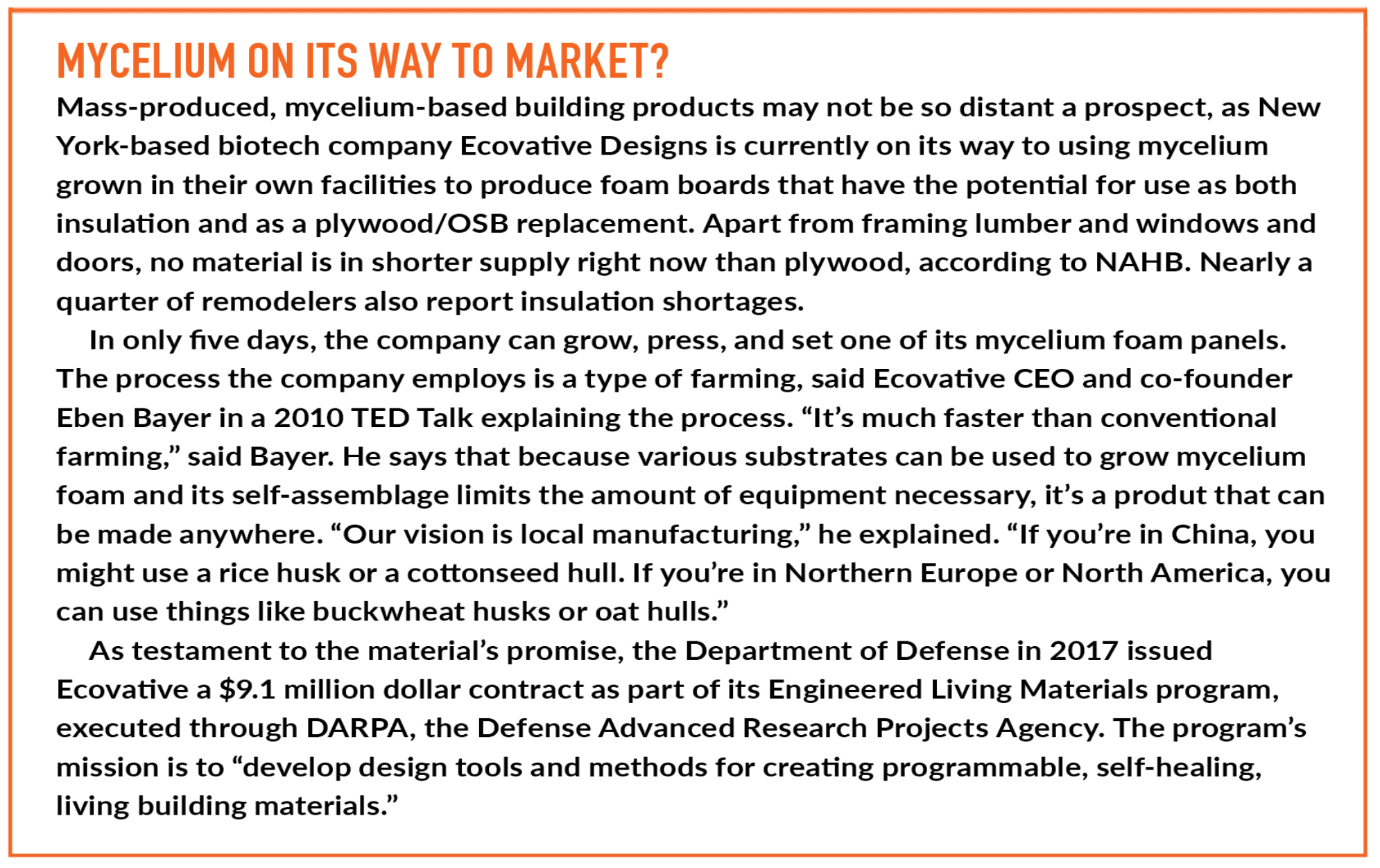
Add new comment
Related Stories
Business Coach Cited in Suit Against Contractor
A New England contractor faces a civil suit alleging his company’s growth was tied to a business coach with a model that “encourages fraud.”
How to Stop Selling and Start Closing Sales
One of the biggest mistakes a salesperson can make is viewing the sales process as a one-sided transaction
Home Improvement Success: Luck, Hard Work, or Who You Know?
Even the most brilliant marketing mind could see fewer opportunities due to lack of networking
Homeowner Trends When Selecting Manufactured Stone
On this episode of Rock Stars of Remodeling, ProVia Product Manager of Stone & Roofing Chance Shalosky joins host Drew Barto to reveal design and color trends that contractors should consider when selling manufactured stone in 2024
Why A Successful Custom Remodeler Started a One-Day Bath Business
On this episode of Rock Stars of Remodeling, Showcase Remodels Owner Sam DeMaio shares why he decided to add a one-day bath business and offers tips on how contractors can accumulate wealth
Learn from the Best in Home Improvement and Remodeling
This year’s Pinnacle Experience aims to help remodelers stay ahead of their competitors by featuring captivating keynote speakers and subject matter experts, collaborative roundtable discussions, and networking with proven players from across the country.
Get the Most Out of Your Teams with This Leadership Style
The transformational leadership style focuses on inspiring and motivating team members to achieve their full potential and exceed their expectations
3 Reasons Contractors Should Set Same-Day Sales Appointments
Director of Home Improvement Drew Barto writes that contractors that aren't implementing same-day sales appointments are missing out on opportunities to close more business
Registration Open for The Pinnacle Experience 2024
Register today for The Pinnacle Experience 2024 in Baltimore from June 26-28. Join the best and brightest in home improvement and remodeling for insight, advice, and relationship-building that will help you take your business to new heights.
How Contractors Can Determine Lead Value
On this episode of Rock Stars of Remodeling, Builder Prime Founder and CEO Jonathan Weinberg reveals how contractors can effectively determine the value of each lead to their business, and why they must do so



